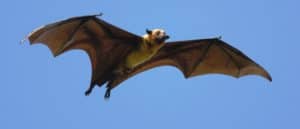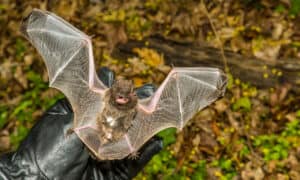The hammer-headed bat (Hypsignathus monstrosus) is the largest bat species in mainland Africa. It is also the most sexually dimorphic bat species in the world, with males and females looking quite different. Read on to find out more about these unusual fruit bats!
Hammer-Headed Bat Appearance
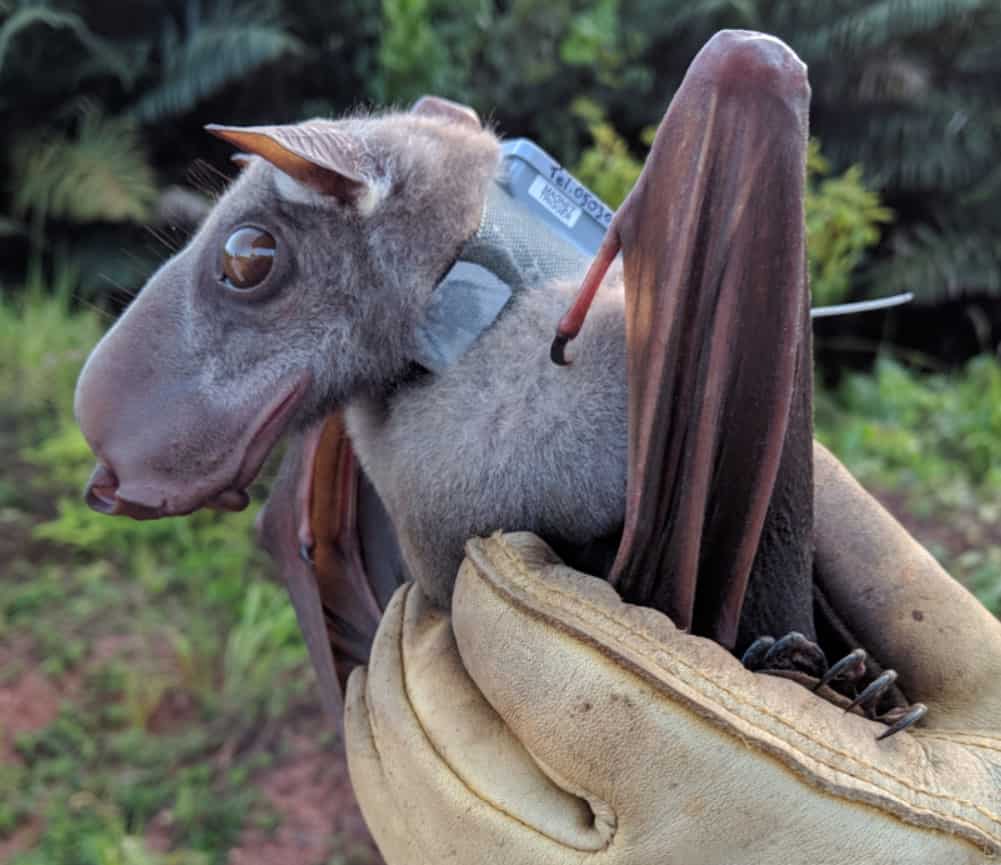
The hammer-headed bat is also known as the hammer-headed fruit bat, hammerhead bat, and big-lipped bat — all names referring specifically to the unique look of the adult male’s head.
©Sarah H. Olson, Gerard Bounga, Alain Ondzie, Trent Bushmaker, Stephanie N. Seifert, Eeva Kuisma, Dylan W. Taylor, Vincent J. Munster, Chris Walzer / CC0 – License
Both male and female hammer-headed bats have wooly, slate-brown fur with paler mantle, dark brown wing membranes, and large eyes. Males are significantly larger, however, growing nearly twice as heavy as females. The average mass for males is 420 g (15 oz), compared to just 234 g (8.3 oz) for females. Males also have larger wingspans, which can reach nearly 1 m (3.3 ft) long. The males are also the ones who have the huge hammer-shaped head for which the species is named, with an enlarged snout and big lips. Females, on the other hand, have smaller, more fox-like faces, similar to other fruit bat species. Males do not develop their distinctive facial features until about 12 months old, however.
Why Do The Males Look So Different?
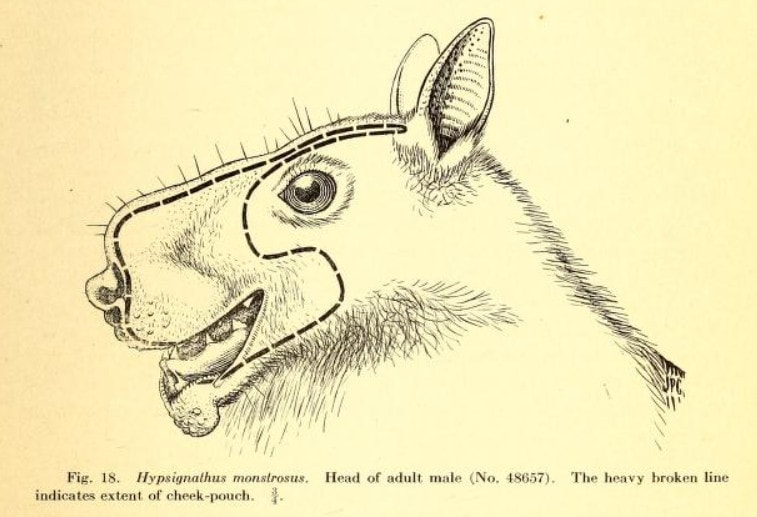
Male hammer-headed bats can vocalize loudly thanks to a combination of a large resonating chamber and a super-sized larynx.
©Allen, J. A., Chapin, J. P., & Lang, H., via Wikimedia Commons / CC0 – License
The males’ unusual noggins are related to their special adaptations for producing and amplifying vocalizations, important for attracting females. The male’s face houses a large resonating chamber, as seen in the diagram above. The male also has an enlarged larynx that is about three times the size of the female; it is so large, in fact, that it displaces other organs, including the heart and lungs!
Where Hammer-Headed Bats Live
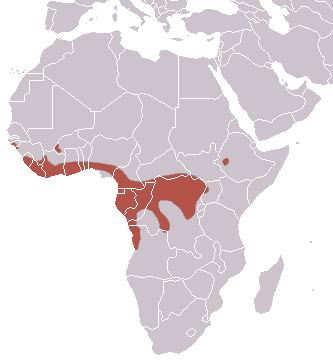
The hammer-headed bat’s range in
Africa
includes the countries of Angola, Benin, Burkina Faso, Cameroon, Central African Republic, Republic of the Congo, Democratic Republic of the Congo, Ivory Coast, Equatorial Guinea, Ethiopia, Gabon, Ghana, Guinea, Guinea-Bissau, Kenya, Liberia, Nigeria, Sierra Leone, Sudan, Togo, and Uganda.
©IUCN Red List of Threatened Species, species assessors and the authors of the spatial data. / CC BY-SA 3.0 – License
Hammer-headed bats live in a variety of forested regions in West and Central Africa. It is a lowland species, found below 5,900 ft (1,800 m) above sea level. It can be found in rainforests, riverine forests, swamps, mangroves, palm forests, and forest-grassland mosaics.
Like many other bats, hammer-headed bats are nocturnal creatures. They spend their days roosting 20–30 m (66–98 ft.) high in the tree canopy, and their nights foraging for food. A roost may contain up to 25 individuals, although less than five is more common. Roosts are not segregated, with both males and females and adults and juveniles mixing.
Hammer-Headed Bat Diet

Figs are the favorite fruit of hammer-headed bats.
©Silverije, CC BY-SA 4.0 – License
Hammer-headed bats, like other fruit bats, are frugivores. Figs make up the majority of their diet, but they also eat bananas, guavas, mangos, and soursops. Fruit may either be eaten right where it is found, or picked and taken away to a nearby tree to eat. They eat by chewing up the fruit to ingest the juice and pulp then spitting out the rest. However, they do incidentally ingest and pass out seeds in their guano, making them potentially important seed dispersers.
Interestingly, males and females forage in different ways. Females forage using a trap-line strategy, traveling along established routes with dependable, if not always high-quality, food sources. In contrast, males go searching for high-quality food sources, traveling up to 10 km (6.2 mi.) to find the best fruit supplies.
Hammer-Headed Bat Reproduction
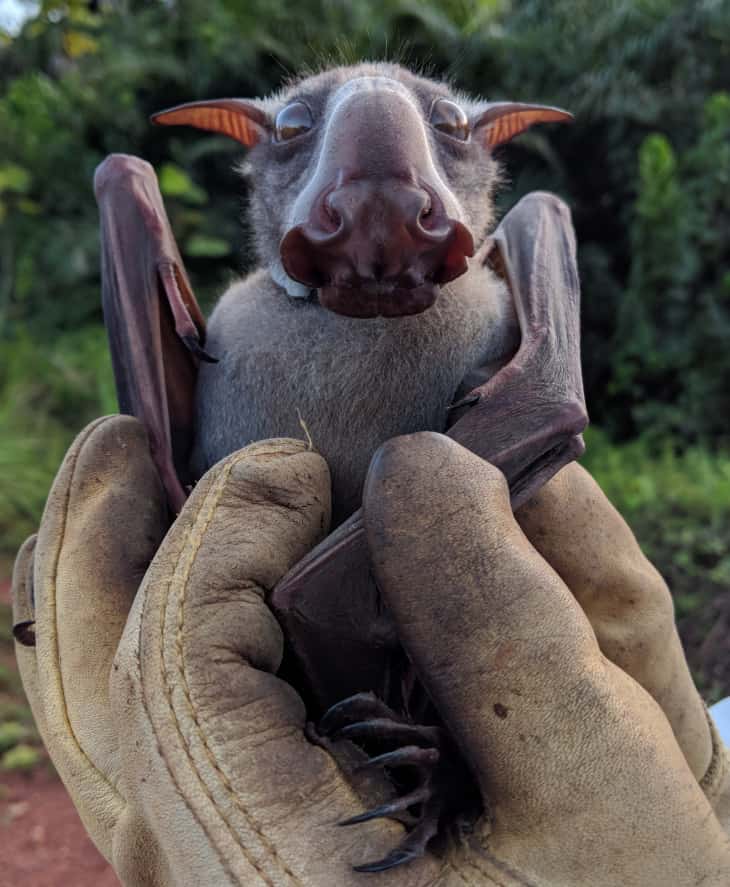
Male hammer-headed bats use those big heads to honk for the ladies!
©Sarah H. Olson, Gerard Bounga, Alain Ondzie, Trent Bushmaker, Stephanie N. Seifert, Eeva Kuisma, Dylan W. Taylor, Vincent J. Munster, Chris Walzer / CC0 – License
In the wild, hammer-headed bats reproduce during the local dry seasons, up to twice a year. In most areas, a lek mating system is used; in some areas of West Africa, however, a harem mating system prevails.
For the majority who do engage in lekking, groups of males assemble along river or stream beds each night. The males space themselves apart in 10 m (33 ft.) intervals and defend their space within the arena, attempting to attract passing females with loud honking and wing flapping. Females then choose their mates from the lineup.
Females usually give birth to a single pup at a time, though twins are possible. The pups weigh 40 g (1.4 oz) at birth and are raised solely by the mothers. Females reach sexual maturity as early as six months old, while males can take up to 18 months.
Hammer-Headed Bat Predators

Long-tailed hawks (
Urotriorchis macrourus) have been observed attacking hammer-headed bats.
©Francesco Veronesi from Italy / CC BY-SA 2.0 – License
The primary wild predators of hammer-headed hawks are large birds of prey. Humans also hunt them as bushmeat in some areas. Hammer-headed bats rely mainly on camouflage for protection from predators, blending into the trees when they sleep during the day.
Hammer-Headed Bat Conservation
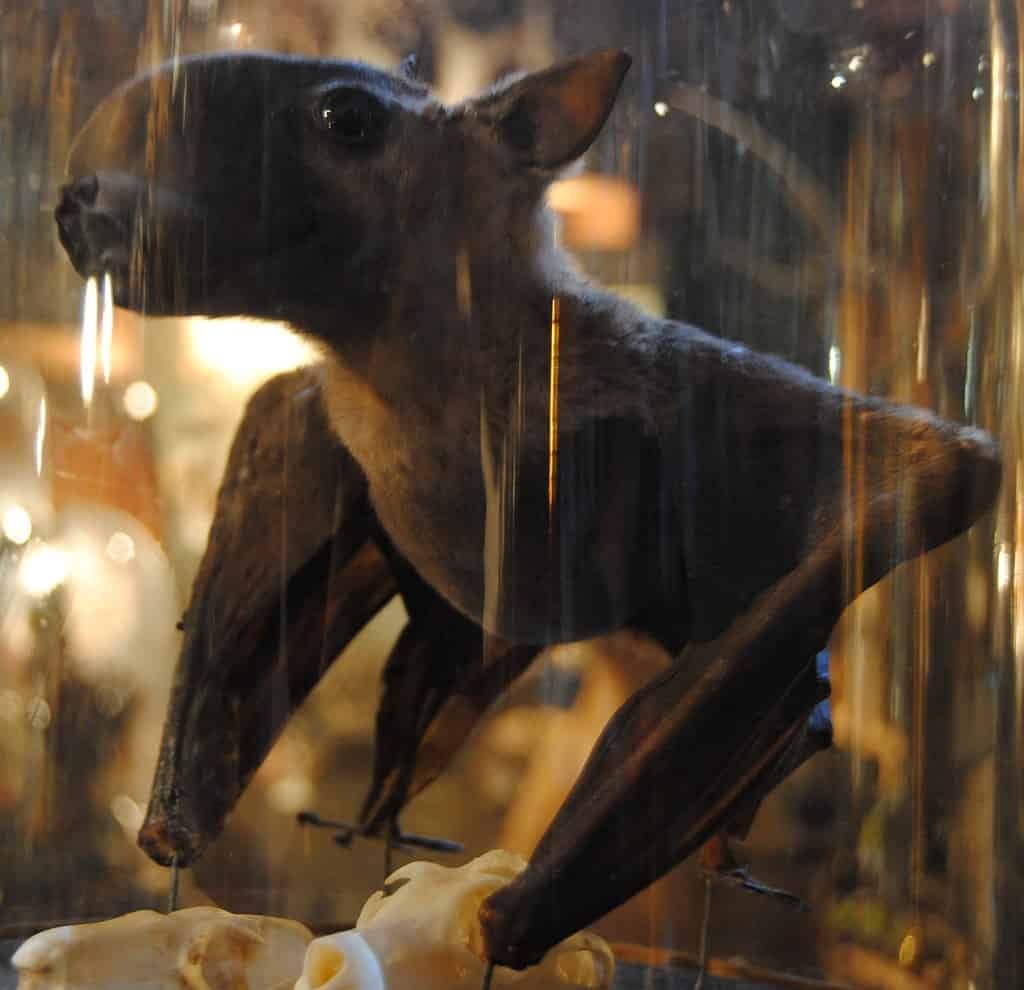
In addition to being hunted as food, hammer-headed bats are sometimes killed for eating fruit crops or being too loud.
©Vdkdaan / CC BY-SA 4.0 – License
The IUCN Red List currently lists the hammer-headed bat as a species of Least Concern, due to its wide distribution, presumed large population that does not appear to be in rapid decline, and its presence in at least some protected areas. There are no good estimates of their actual population numbers, however. The primary threats to the species are believed to be habitat loss, hunting, and persecution by humans as a pest species. Hammer-headed bats are also very rare in captivity. There is still much left to learn about Africa’s biggest and most unique-looking fruit bat!
The photo featured at the top of this post is © Sarah H. Olson, Gerard Bounga, Alain Ondzie, Trent Bushmaker, Stephanie N. Seifert, Eeva Kuisma, Dylan W. Taylor, Vincent J. Munster, Chris Walzer / CC0 – License / Original
Thank you for reading! Have some feedback for us? Contact the AZ Animals editorial team.



